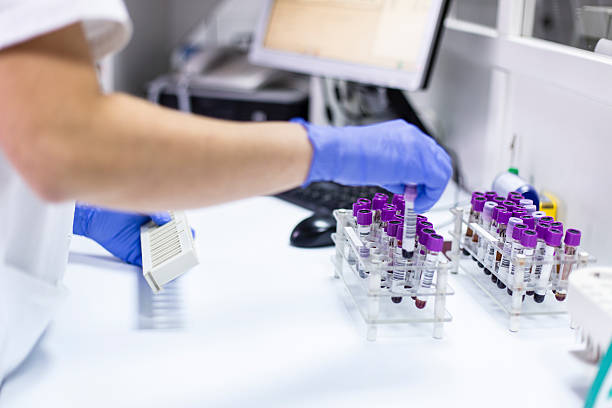Understanding Plasma Donation
Plasma donation is a critical medical process that provides life-saving treatments for various conditions, including immune deficiencies, hemophilia, and other blood disorders. The process involves collecting plasma, the liquid part of blood, which is then used to produce therapies for patients in need. While donating plasma is a generous act that can save lives, potential donors often wonder about the time commitment involved in the donation process.
Preparation Before Donation
Before donating plasma, it’s essential to prepare adequately to ensure a smooth and efficient process. Preparation begins a day or two before the scheduled donation. Donors are advised to hydrate well, as plasma donation can cause dehydration. Consuming a balanced meal rich in iron and protein is also recommended to keep energy levels up and ensure that the body is well-nourished. On the day of the donation, avoiding caffeine and fatty foods can help in preventing complications and making the plasma extraction process more efficient.
The Initial Screening Process
When a donor arrives at the plasma donation center, the first step involves a thorough screening process. This screening includes filling out a health questionnaire to provide a comprehensive medical history. The questionnaire helps identify any potential risk factors or conditions that might make plasma donation unsafe for the donor or the recipient. After completing the questionnaire, donors undergo a brief physical examination conducted by medical personnel. This examination typically includes checking vital signs such as blood pressure, pulse, and temperature, as well as a finger-stick test to measure hemoglobin levels.
The initial screening process is crucial as it ensures that donors are in good health and eligible to donate plasma. This part of the process can take anywhere from 30 to 45 minutes, depending on the center's efficiency and the donor's health history.
The Plasma Donation Process
Once the screening is complete and the donor is deemed eligible, the actual plasma donation process begins. The donor is escorted to a comfortable reclining chair or bed where the donation will take place. A trained phlebotomist cleans the donor’s arm and inserts a needle into a vein. The blood is then drawn and passed through a plasmapheresis machine, which separates the plasma from the other components of the blood.
The plasmapheresis machine works by spinning the blood to separate the plasma, which is a yellowish liquid that makes up about 55% of the blood's total volume. Once the plasma is separated, the remaining blood components—red blood cells, white blood cells, and platelets—are returned to the donor's body through the same needle. This cycle of drawing blood, separating plasma, and returning blood components continues until the desired amount of plasma is collected.
The actual donation process usually takes about 45 minutes to an hour. However, this duration can vary depending on factors such as the donor's hydration levels, vein size, and overall health. First-time donors might experience a slightly longer process as they familiarize themselves with the procedure.
Post-Donation Procedures
After the plasma donation is complete, the needle is removed, and a bandage is applied to the donation site. Donors are typically asked to remain seated or lying down for a few minutes to ensure they do not feel lightheaded or dizzy. The staff at the donation center often provide refreshments such as juice and snacks to help restore energy levels and rehydrate the body.
Donors are advised to avoid strenuous activities and heavy lifting for the rest of the day to prevent any complications. It is also recommended to continue hydrating and consuming nutritious foods to aid in the body's recovery process.
The Total Time Commitment
In total, the entire plasma donation process, from arrival to departure, can take approximately two to three hours. This time includes registration, health screening, the actual donation, and post-donation recovery. For first-time donors, the process might take a bit longer due to the additional steps involved in the initial screening and orientation. Returning donors may find the process more streamlined, potentially reducing the overall time spent at the donation center.
Frequency of Plasma Donation
One of the unique aspects of plasma donation compared to whole blood donation is the frequency at which individuals can donate. Since the body replenishes plasma more quickly than red blood cells, donors can give plasma more frequently. According to regulatory guidelines, individuals can donate plasma up to twice a week, with at least 48 hours between donations. This frequency allows for a consistent supply of plasma for medical treatments without compromising the donor’s health.
Benefits of Plasma Donation
Donating plasma is a rewarding experience that provides numerous benefits. For donors, it offers the satisfaction of knowing they are contributing to life-saving treatments for patients with serious medical conditions. Additionally, many plasma donation centers offer compensation for donors' time and effort, providing an added incentive for regular donations.
For recipients, plasma-derived therapies can be life-changing. Plasma proteins and antibodies are used to treat a variety of conditions, including immune deficiencies, clotting disorders, and burns. The demand for plasma is always high, and each donation plays a critical role in meeting this need.
Potential Side Effects and Risks
While plasma donation is generally safe, it is not without potential side effects and risks. Some donors may experience mild side effects such as dizziness, lightheadedness, or fatigue, which are usually temporary and resolve quickly. In rare cases, donors might experience more severe reactions such as fainting, bruising at the needle site, or allergic reactions to the anticoagulant used during the donation process.
To minimize risks, donors are encouraged to follow all pre-donation and post-donation guidelines provided by the donation center. Staying hydrated, eating a balanced meal, and avoiding strenuous activities can help reduce the likelihood of adverse reactions.
The Role of Plasma Donation Centers
Plasma donation centers play a vital role in ensuring the safety and efficiency of the plasma donation process. These centers are equipped with trained medical staff, advanced technology, and stringent protocols to safeguard donors' health and ensure high-quality plasma collection. Donors can expect a clean, comfortable, and supportive environment where their health and well-being are prioritized.
Plasma donation centers also adhere to strict regulatory standards set by health authorities to ensure the plasma collected is safe for use in medical treatments. These standards include regular inspections, quality control measures, and ongoing training for staff to maintain the highest level of safety and efficacy.
Conclusion
Plasma donation is a generous act that makes a significant impact on the lives of patients in need. While the process requires a time commitment of approximately two to three hours per session, the benefits far outweigh the effort. By understanding the steps involved in plasma donation and preparing adequately, donors can have a smooth and rewarding experience.
The demand for plasma is ever-present, and regular donations are essential to meet this need. Whether motivated by altruism or the compensation offered by donation centers, each plasma donor contributes to a critical supply chain that supports life-saving treatments worldwide.




